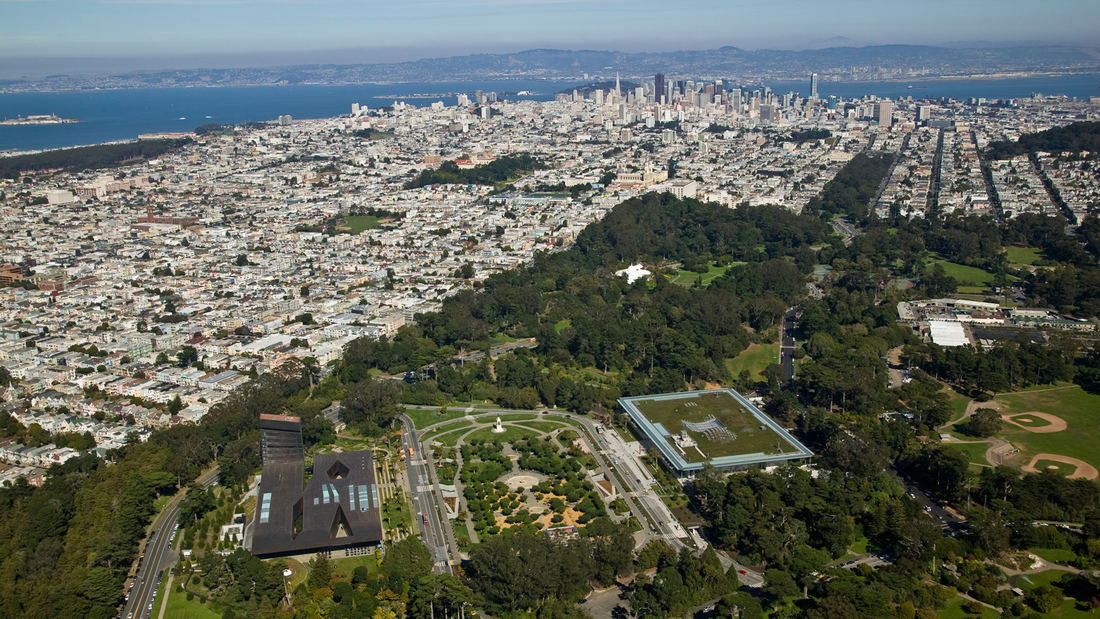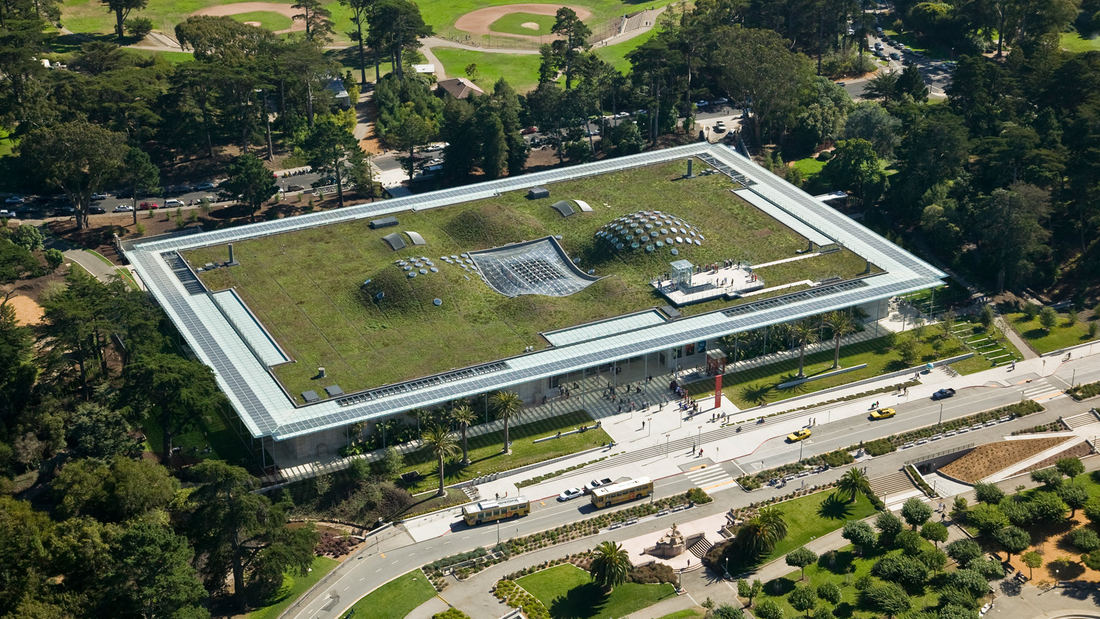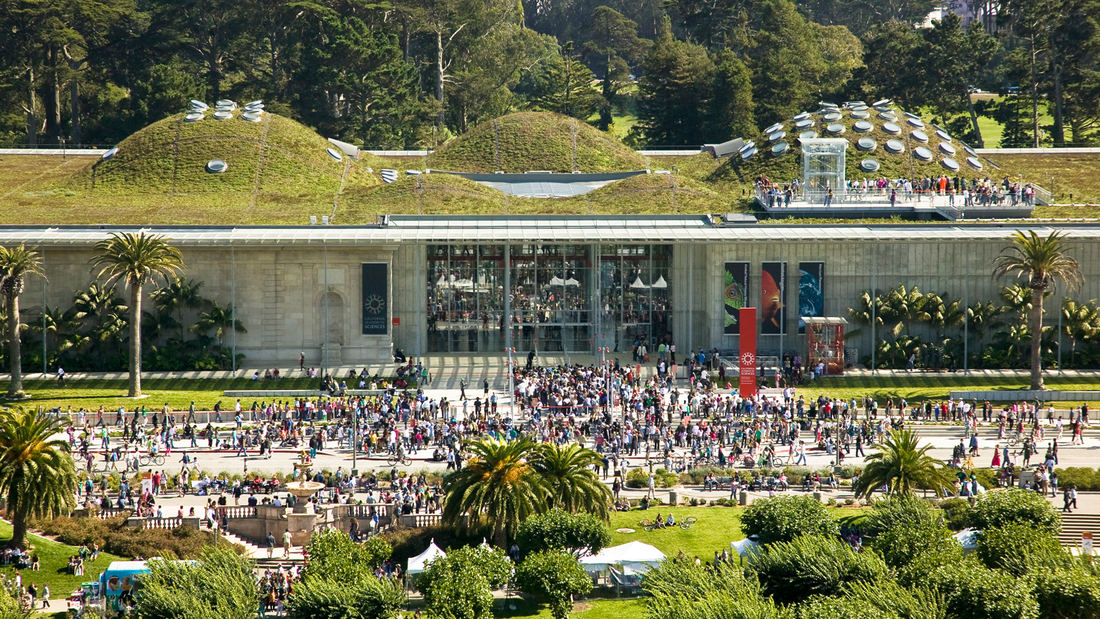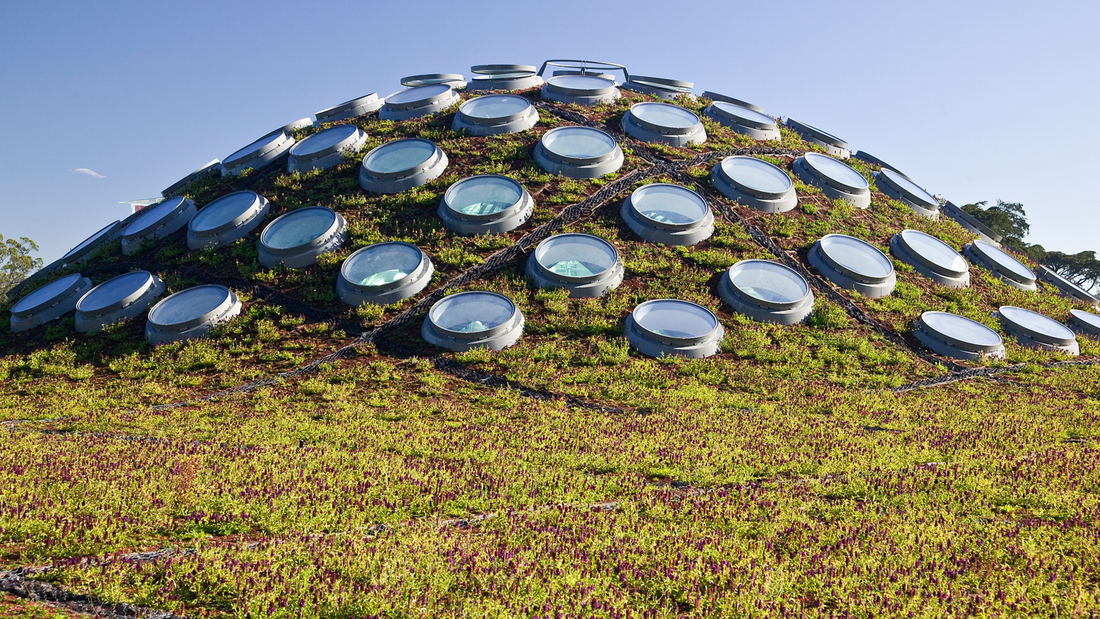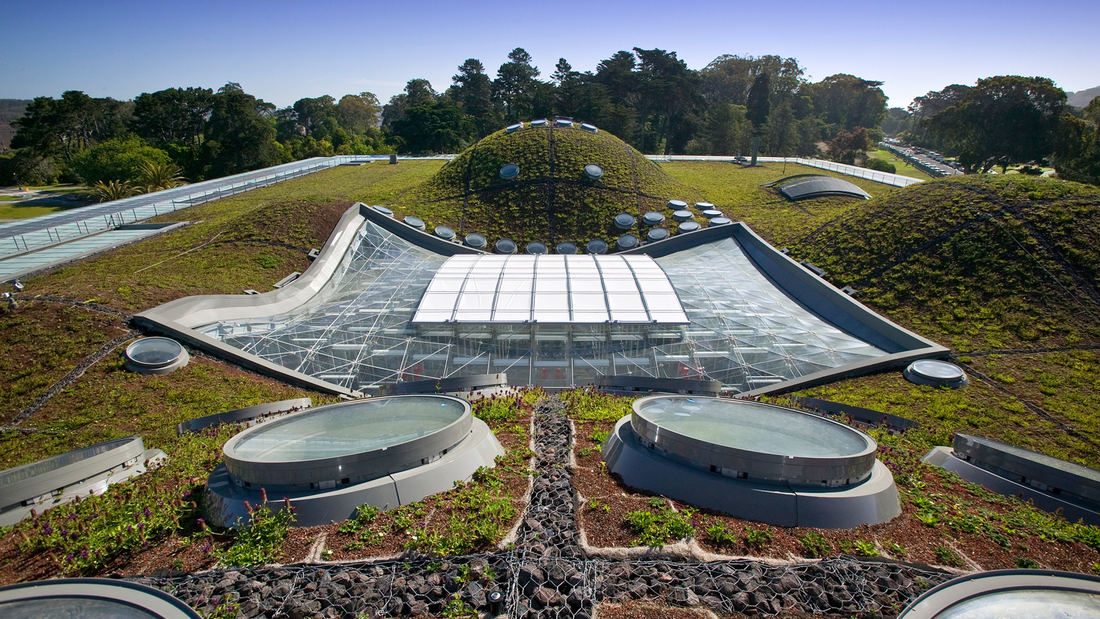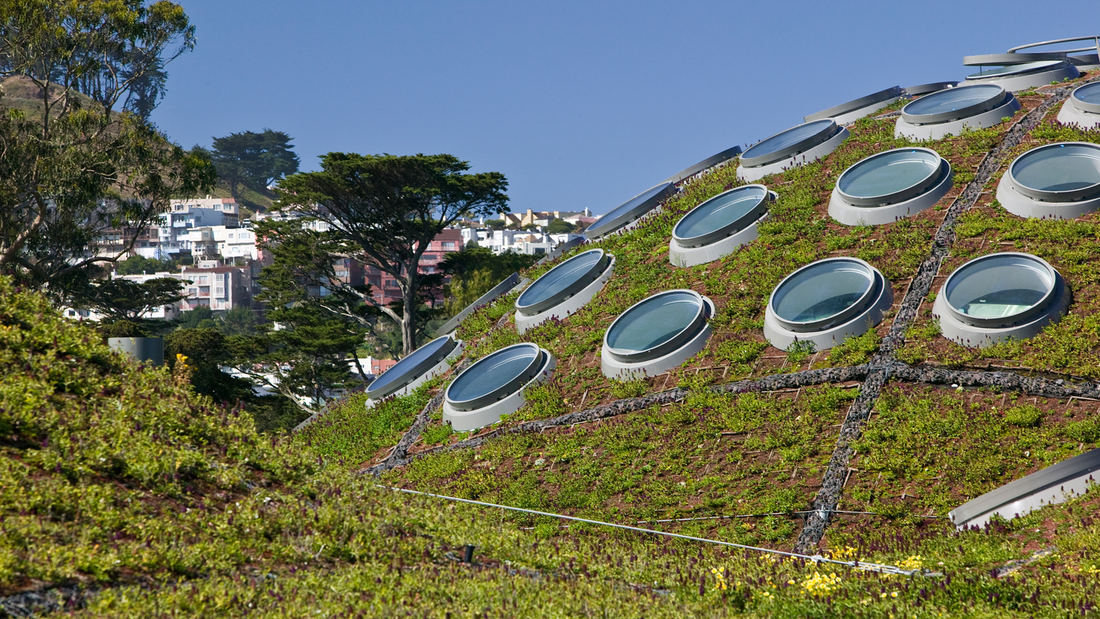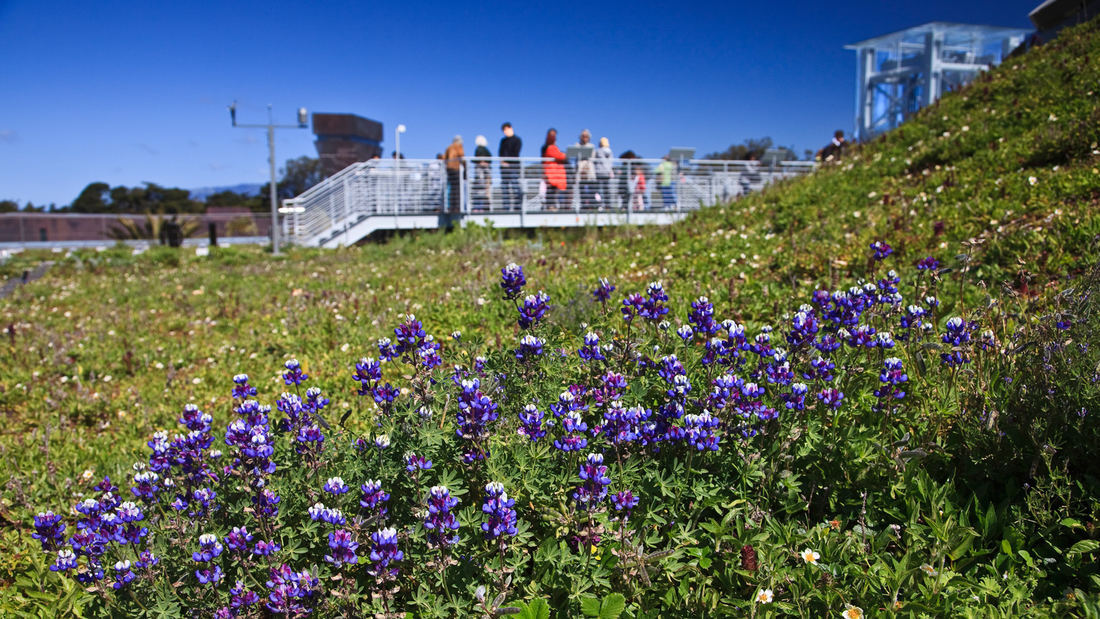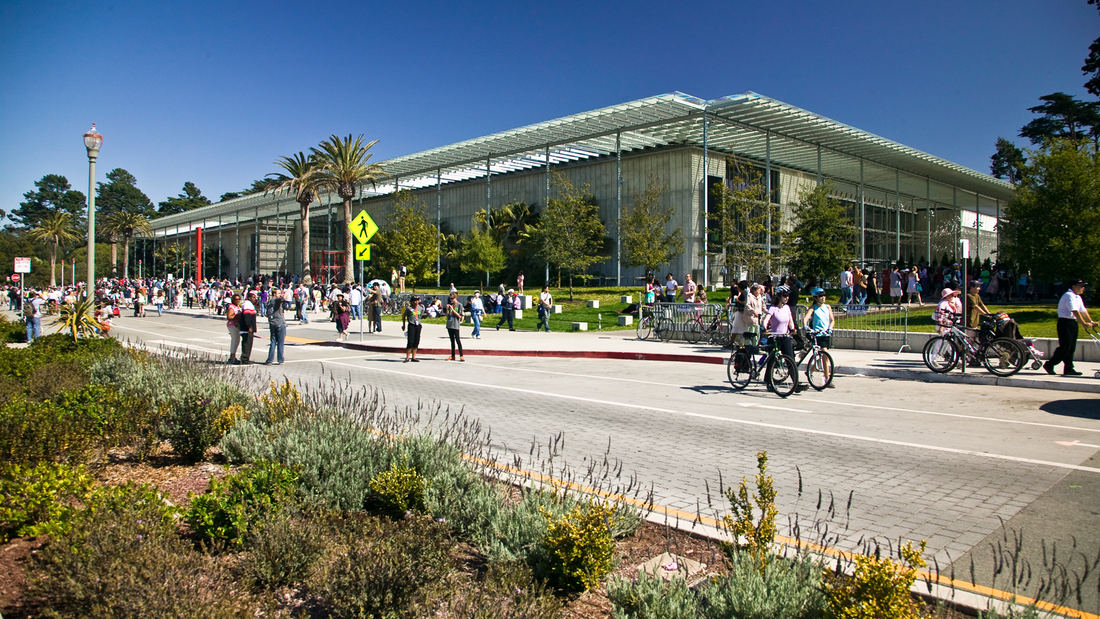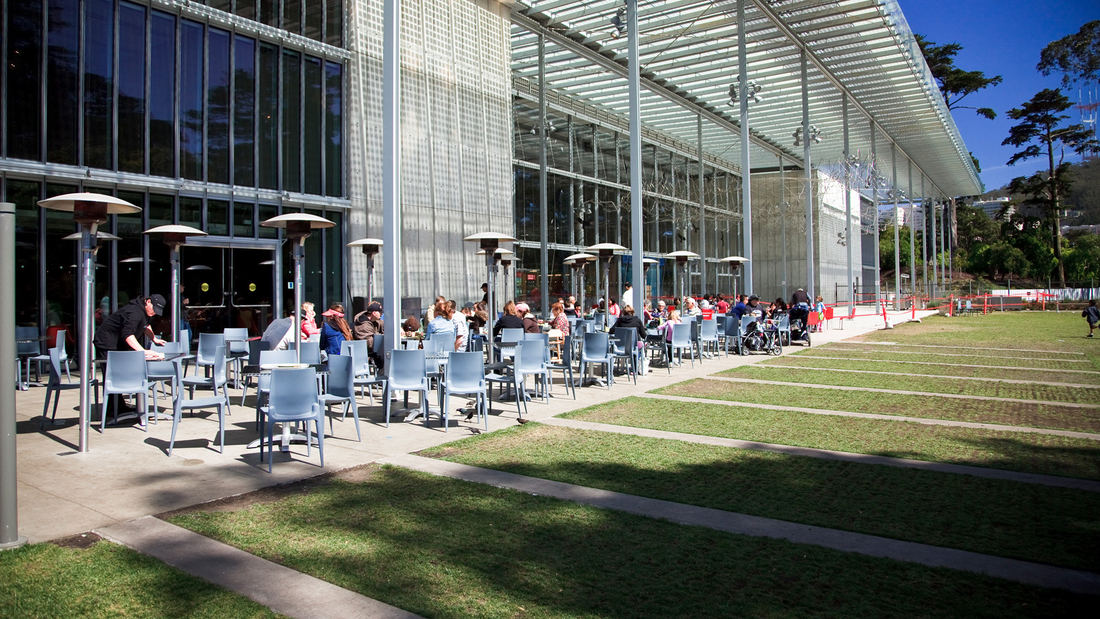One of San Francisco’s first sustainable building projects, the California Academy of Sciences supports a stunning 2.5-acre green roof. Emphasizing habitat quality and connectivity, the project has received two LEED Platinum certifications.
The building’s architectural team, the Renzo Piano Building Workshop (RPBW), invited SWA Group and horticultural consultant Paul Kephart, of Rana Creek Living Architecture, to collaborate on the design of the living roof. SWA Group provided full landscape architectural services for the living roof and site.
RPBW’s concept lifts the natural landscape three stories up and places it on top of the building, creating a dramatic living roof. The vegetated roof’s contours conform to the facilities, offices, and exhibition halls below—rising above the planetarium and the rain forest exhibit and lowering at the central piazza to introduce light and air into the heart of the building. The piazza is partly covered with glass to create a microclimate enabling year-round use.
San Francisco’s mild climate, along with the Academy’s commitment to environmental protection, provided an ideal opportunity to incorporate sustainable design strategies into the construction plan. Not only was energy- efficient heating and cooling considered, but also green building materials, reduced site disturbance, seasonal irrigation, and energy generation. Sustainability is integrated into the exhibitions as well, offering the public a chance to learn more about environmentally sound design principles.
Following Renzo Piano’s original concept drawing, the roof’s seven hills are intended to echo the seven major hills of San Francisco. Because the hills are as steep as 60 degrees in some places, and thus difficult to plant, extensive testing was done. The SWA and Rana Creek partnership designed full-scale models to test the anchoring systems and the multi-layered soil-drainage network that forms the foundation for the plant materials.
An underlying grid of gabion channels provides water drainage and support for the compressed coconut hull planting trays. Plants are first sown in trays off-site. When they’re established, trucks outfitted with special racks transfer them to the site. The plant trays, which always contain three native species, are then hoisted atop the roof and laid by hand over insulating and waterproofing materials inside the gabion channel grid. The trays also provide their own temporary support structure until the plants become well established on the rooftop. Over time, the trays disintegrate and become part of the soil system.
A model of technical and natural systems working harmoniously, the roof features numerous sustainable design elements. The California native plants that carpet the building were chosen for their adaptability to the Bay Area’s seasonal irrigation cycle. The plants were also selected to attract local butterflies, birds and insects, some of them endangered. The roof is designed to thrive on natural, not mechanical irrigation sources. Additionally, the drainage system recycles all storm water runoff back into the water table. The roof generates sustainable energy as well. Photovoltaic cells line the roof perimeter, collecting solar energy to help power the Academy.
As part of its commitment to sustainability, the Academy has reduced the building’s physical footprint and the surrounding pavement by approximately 1.5 acres. This land will be re-established as park gardens.
Sonoma State Weill Lawn & Commons
Weill Lawn and Commons provide outdoor performance venues at Green Music Center, a world-class performing arts complex. The landscape architects prepared overall master planning and landscape architectural design. A simple, dramatic grading plan unifies project elements, directs circulation, and buffers concert venues from adjacent roadway traffic. Weill Lawn...
Luohu Station
Luohu Land Port and Train Station is a border control area and the busiest place in Shenzhen, China. As such, the city was faced with the challenge of moving as many as 600,000 people per day and determined to build a subway. Under the auspices of the Shenzhen Municipal Planning Bureau, a team of consultants from eight different countries worked together on th...
Elk Grove Civic Center
SWA’s design for this community resource improves upon part of a 56-acre master plan with a civic center campus set within a beautiful park, and an added public outdoor commons. The pedestrian-friendly commons weaves new buildings together with mature trees and an outdoor living space linking together a community center, an aquatics center, and a future librar...
Guthrie Green Park
Guthrie Green transforms a 2.6-acre truck yard into a lively urban park in the heart of downtown Tulsa’s emerging arts district. Opened in September 2012, Guthrie Green has become the area’s leading destination, drawing 3,000 plus people weekly to activities that have enriched the urban experience and spurred district-wide revitalization. The high-performance ...


